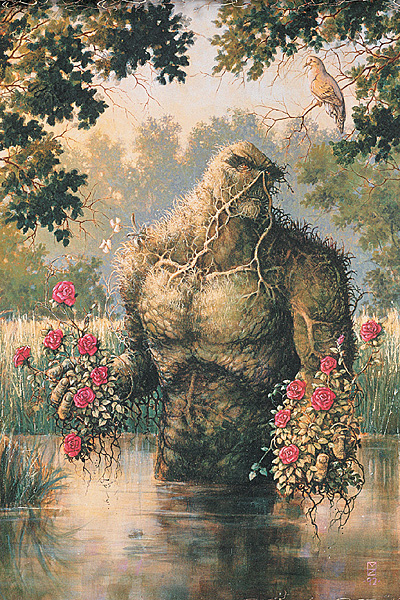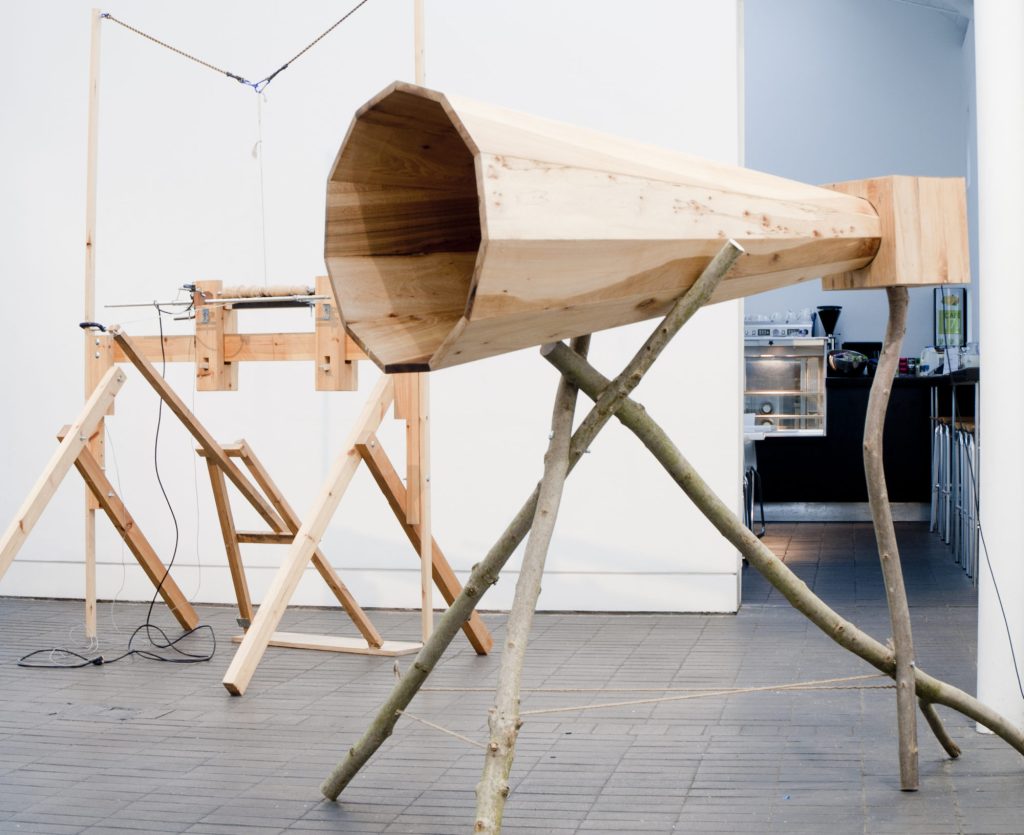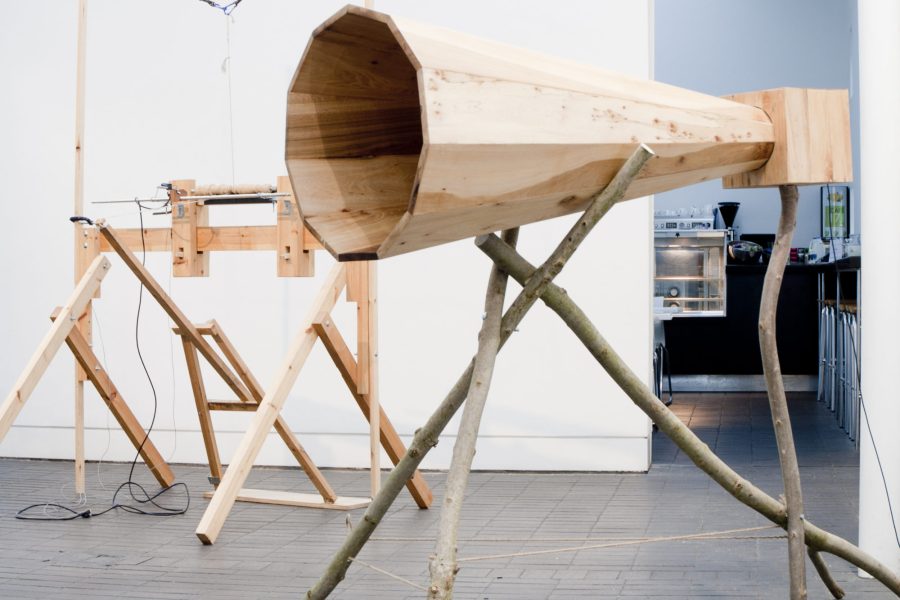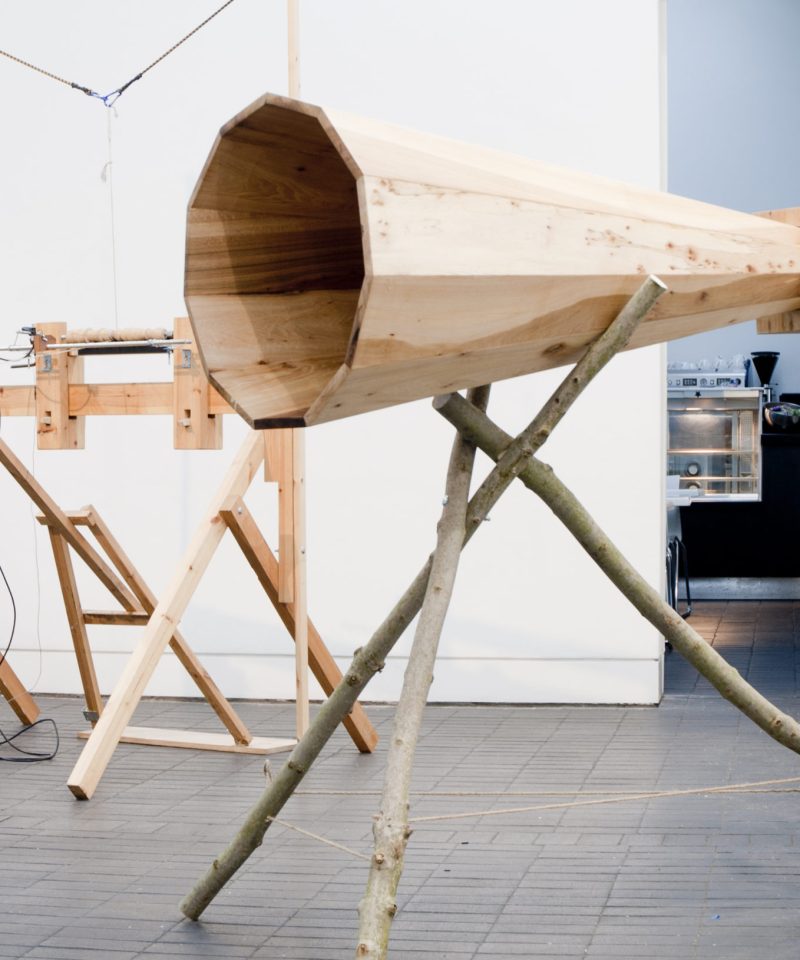In the broad ecosystem of thought that surrounds the TERRA show, I’ve found myself turning to a few odd corners. One has been re-reading some of the old Swamp Thing comic books, when in 83-87 Alan Moore had re-cast the character from a gothic horror genre to something more ecologically minded – a ‘superhero’ who was in touch with nature.

Now, before I lose some (most?) of you here, it’s more the hybrid of human and plant that interests me here, much in the same way the works in Terra have taken on a straddling position of occupying the gallery with manipulated, recorded and re-presented aspects drawn from a more natural setting. The Swamp Thing character comes from a heritage of muck-beasts in pulp literature, maybe starting with Theodore Sturgeon’s 1940 short story It, through to The Heap, The Man-Thing, and then the equally non-descript name of ‘Swamp Thing’. Moore’s run on the narrative saw him turning it to a more metaphysical bent, to make a sort of first pop eco-warrior, and as a place to question how we relate to vegetation as a metonymy for nature and the non-human. He does take the chance to make a few broad swipes – calling humans ‘meat’ and ‘steak.’ One particular story line, ‘Earth to Earth’ sees him overgrowing the city as a new forest, which some people-only a few- embrace as a new, ideal way of life. Most people try to stamp it out. Reading it now, it does feel idealistic, binary in its separations. But at the same time, the development of urban thought from people like the Situationists has led to the treatment and passive acceptance of the city as a jungle in and of itself.
This might connect interestingly to another, more obvious reference point for this show in the artwork and writings of Robert Smithson. His earthworks are a touchstone for works like Anne-Mie Melis’s and Jonathan Anderson’s in the TERRA show, but I’m also interested in the way that Smithson categorized and examined place in his writing. Specifically, his look at ‘sites and settings;’ in a 1968 untitled piece of writing with the subtitle Site Data, he differentiates between different types of locations, from the urban apartment to the industrial site. He has this to say about the art gallery and the art museum:
‘The art gallery (since the late 50s) – Conforms to the archetypal site of tragic theatre in most cases. The inner Chamber = Salesroom. Antechamber = Secretary’s Office. Exterior Space = Exhibition space. Unconscious hierarchical room configuration.’
‘The art museum (modern) – Tourist attraction. Some curators do public stunts and promote art through mass-media. Improves the mind of the many, ruins the mind of the few. Oversized paintings and oversized sculptures cause interesting dislocations in scale, thus changing the interior meaning of the museum. The museum replaces the church.’
In another short piece from the same year, A Provisional Theory of Non-Sites, Smithson describes his work The Non-Site (and indoor earthwork), what was the first in a series of works with the title of Nonsites.

As the Jerwood, somewhere between the gallery and the museum, for the site of TERRA, which is a series of works which- like Smithson’s Pine Barren Plains piece above- are based on external places, I think it’s worth thinking of the show in this lineage of the non-site. Transposing the subterranean materials of coal to a more celestial configuration, replicating the scent of the forest in different seasons, turning tectonic movements into sculptural forms, the works in TERRA I would say are distinctly urban, requiring and working from that perspective and distance from the forest floor. But in their referencing, looking and casting to these other places, are perhaps instilling a perspective different from the ‘parkours’ appropriation of the city-as-nature view that has been unconsciously adopted. The non-site is a deliberate displacement, whose lack and obvious disguise and non-belonging make it a thorn to catch on and keep the problems of moving between the human, the non-human and their forms of mutual manipulation and inter-relationships incessantly open.


